
The Forgotten Batman Game
This is one of a few pieces on this site rescued from the digital scrapheap, originally published for a site that’s no longer online. I’ll begrudgingly remove if any shadowy publishing types compel me to relinquish what’s rightfully theirs, despite having unceremoniously binned it themselves, but come on. That’d just be silly.
It’s presented as is, so you’ll have to forgive any outdated references or generally shoddy writing.
–
It’s easy to forget that, prior to Rocksteady’s superb Arkham Asylum, competent Batman games were hard to come by. Cast an eye through the list of pre-2009 Batgames and Bruce Wayne begins to look a bit more like Adam Sandler, gurning his way through dud after dud. The early 2000s was undoubtedly the nadir, Batman’s Jack and Jill period, with Gotham City Racer, Dark Tomorrow and Rise of Sin Tzu all launching within three years.
A notable omission from the canon, however, is a title that’s infinitely more playable than any of the above and yet is almost never included when it comes to cataloguing Batman’s gaming history. Called The Batman, a 2004 tie-in to the animated series of the same name, it managed to cram solid platforming, simplistic-yet-satisfying detective work, and even Batmobile and Batwing sections into a neat little 2D game.
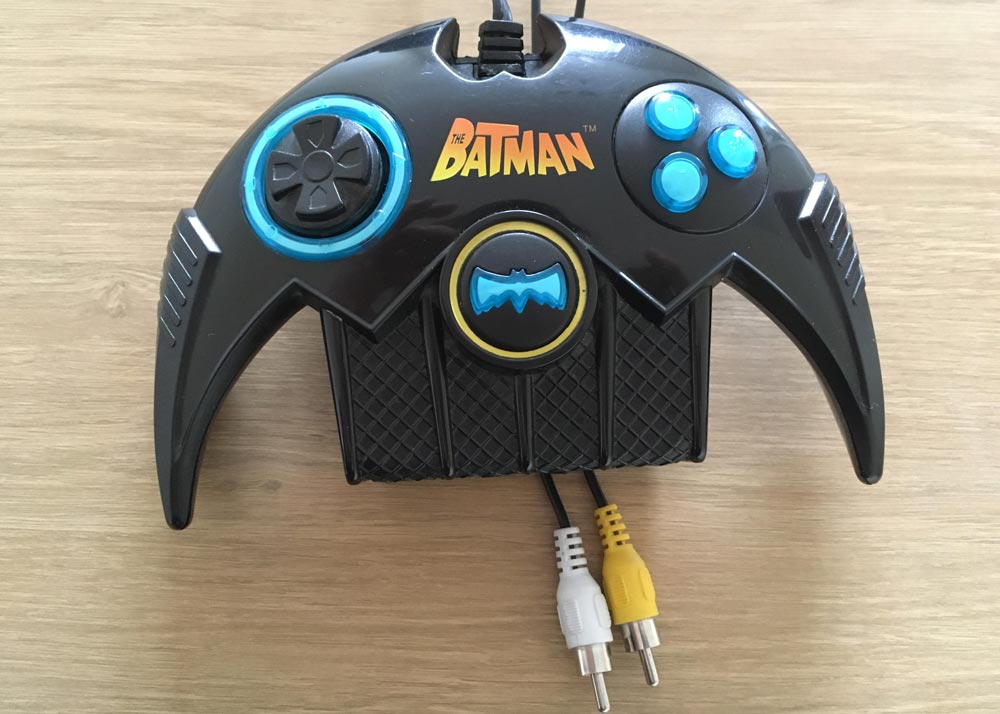
The fact that nobody remembers it has more to do with form than content. Dark Tomorrow and Rise of Sin Tzu, for all their failings, were lent an air of unwarranted credibility by launching on established consoles. The Batman, meanwhile, was released in a line of standalone TV games by toy manufacturer Jakks Pacific. More at home in a toy shop than a dedicated video games retailer, it was a game baked into a cheap-looking proprietary controller with AV-out.
This inevitably cursed The Batman with the whiff of a throwaway distraction, of a stocking filler for kids whose parents didn’t want to buy them PlayStations, killing dead any chance of it being taken seriously. And while it would be a stretch to call it an undiscovered classic, it deserves at least to be remembered for offering a coherent and fun Batman experience at a time when all around it were failing to do so – with much larger budgets and on proper consoles, to boot.
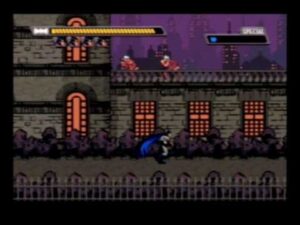
Developing a so-called ‘Plug and Play’ TV game is a very different experience to working on a PC or console game, with plenty of unique challenges. It’s a side of the industry that’s always been marginalised and ignored, catering to a young market that’s now been all but swallowed up by mobile gaming – but occasionally the talent given this thankless task could transcend the technological limitations.
London-based developer HotGen had previously developed Game Boy Advance ports of Star Wars: Jedi Power Battles and Tony Hawk’s Pro Skater 3. It was a mobile-focused studio and, after failing to secure a sequel to another GBA title, Medal of Honor Infiltrator, the headcount began to shrink to around 10 full-time staff. This was a difficult time, and working with Jakks Pacific on TV games was a way to relieve pressure: The Batman became HotGen’s main focus in 2004.
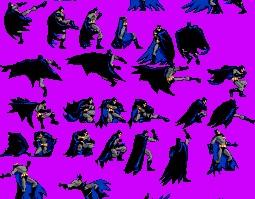
This meant that, while other developers were pushing the boundaries of the maturing sixth generation consoles, and many other UK studios were folding, HotGen’s survival (and Batman game) depended on hardware that was closer to 8 and 16-bit platforms.
“Technically limiting? Compared to the PS2s and Xboxes of the time this was positively prehistoric,” recalls former HotGen designer Robin Levy, who worked on design and character animation on The Batman. “The easiest way to imagine how this all works is to visualise some units having a NES inside, others would be like the Sega Genesis, yet more a SNES and, if we were really lucky, something resembling a crippled PS1.”
Each TV game came with its own hardware, and so the actual guts and possibilities of each machine was variable. For The Batman one of the biggest issues would be the hardware offering only a tiny amount of storage, with the final game ROM clocking in at a mere 1-2MB thanks to the team’s smart use of pre-PlayStation optimisation and compression techniques.
Six people worked full-time on The Batman, with some work contracted out to freelancers. The main team consisted of producer James Stewart, designers Dave Barley and Stu Ryall, coder Carl Muller, Lead Artist Mark Frazer, and Robin Levy on design and character animation. Levy is keen for them all to get a name-check here, due to the fact that HotGen company policy at the time was not to give individual credits on its releases for fear of having its best talent poached.
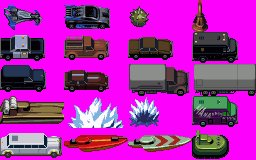
This is just one of the many strange things about the development of The Batman. Another is that while toiling away, the team remained largely in the dark as to what the product would eventually look like. Controller designs typically wouldn’t be finalised until late in the project, and the hardware itself would occasionally get changed part of the way through development. “Everything was dictated by the cost to produce each physical unit,” Levy explains. “We even had to specifically request additional buttons and get that cleared by the bean counters, as additional button switches cost money.”
For The Batman, it was then-HotGen employee Gary Kemp’s design for a Batarang-shaped controller that was given the green light by Jakks, although the realities of having to fit four AA batteries in the unit made the final product rather bulkier than the slender controller he conceptualised. It sits in the hands more comfortably than you’d expect, the only real quibble being that the buttons can feel somewhat cheap – again, down to Jakks’ bottom line.
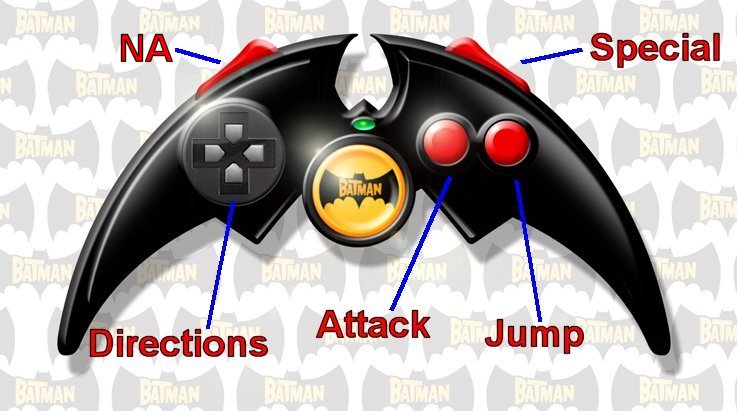
Playing the game again for the first time in several years, the necessary technical compromises of The Batman are shown in a new, dazzling light. Levy says that the game was “low resolution both in on-screen pixels and in the number of colours art had to be drawn in – for instance, most sprites were only 16 colours from a larger shared palette.” He adds that “CRT TVs blurred a lot of visual failings,” and it is true that the game looks obscenely stretched and bitty on modern screens.
But this is an inevitable fate that’s befallen the vast majority of pre-HD games. More stark symptoms of the limitations under which HotGen was working are the repetition of enemies in mindless brawling stages, or the rapidly-looping scenery in driving sections. Despite all this, however, there are still enjoyable moments in The Batman.
The Batman’s greatest success is that it feels like a full game with a coherent through-line. This may sound like damning with faint praise, but many TV games of the era neglected this, mistaking good value for the sheer number of mini games it could cram into a single unit. “A big limitation we had was that Jakks had a real need to scream ‘5 GAMES IN ONE!’ on every box,” says Levy. “I wasn’t keen on having a single crappy subgame based around The Joker and another for The Penguin, and I still wanted to have some semblance of a basic story.”
Levy and his team were able to instead push for The Batman to be split into episodes rather than individual mini games, each based around a specific villain and culminating in a boss fight. The levels in each episode provided the kind of gameplay variety that Jakks demanded – simple use-X-on-Y detective stages, Batgrapnel-based platforming, rudimentary beat-’em-up levels and shmup-style vehicle sections – but flowed together far more naturally than in the average Plug and Play release.
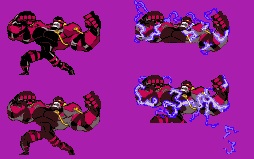
The reality though, which Levy readily acknowledges, is that this wasn’t a platform for experimentation or creative expression. HotGen’s survival at this time was built around being accommodating to partners like Jakks, meeting deadlines and appeasing clients being the major objectives. “These games weren’t done this way as a stylistic choice like modern, neo-retro games,” considers Levy. “They were done this way to ensure a cheap unit cost for a mass-produced piece of plastic that will inevitably end up in a landfill years later. And I kind of feel bad about that.”
That’s one way to look at it. Another is that at least one copy of The Batman didn’t end up in a landfill, but lodged in the back of my mind. Discovering the circumstances under which The Batman was developed only serve to make it more impressive that the game turned out as well as it did. It’s a reminder of just how wide and varied the games industry is, once you look beyond the big sellers and cutting edge of the day, and how few of the behind-the-scenes pressures we ever even know about.
The Caped Crusader’s gaming history is full of highs and lows: great games, ones that should have been much better, and total misfires. Even for such a well-covered character, however, there are all sorts of interesting things in the gaps. Here’s to the six uncredited developers that did a lot with not very much, who made a game that many players might sneer at without ever trying, but who made a game that – let’s be blunt here – entertained those kids who didn’t have the latest console. The Batman is a curio, for sure, and a reminder that not all heroes wear capes.
